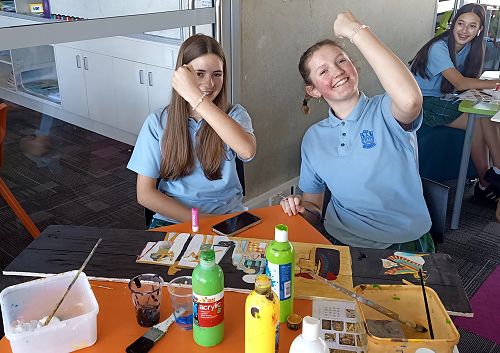
Year 9 Historians go the extra Nile
Year 9 History is an awesome one-term programme and covers exciting elements of Māori and Egyptian history. Teacher Mr Carew shares what has been happening.
As a part of the programme over the last two terms, classes have included the making of models of an Egyptian sarcophagus (coffin), which was completed, and Ruapekapeka (The Bats Nest) Pa, which is still a work in progress.
“Ruapekapeka Pa is connected to the rangatira Kawiti, the fighting chief of Kawakawa (Bay of Islands), who was a member of the Ngati-Hine hapu of the Ngapuhi. He was a rival and enemy of Hone Heke, but through the foibles of war became his ally.
Kawiti's name stood at the head of those who signed the Treaty of Waitangi, but he soon became dissatisfied with the new order. He joined Heke's rebellion more out of loyalty to his people in their quarrel with the Government than from any desire for plunder.
Heke and Kawiti joined forces at Te Uruti, near Kororareka, where Heki cut down the flagstaff while Kawiti launched a diversionary attack on the town. Kawiti lost a son in the fighting, was slightly wounded himself, and his men were twice dispersed.
He retired to Puketutu pa where Imperial troops, aided by Waka Nene's warriors, attacked him. In this siege his second son, Taura, was killed. Undeterred, Kawiti built a strong pa at Ohaeawai, though he could no longer count on the support of Heke, who had been wounded and was anxious for peace.
On 24 June 1845, in the hope of ending the northern rebellion, Colonel Despard made a foolish attack on the unbreached fortifications of Ohaeawai, suffering heavy losses. Kawiti, however, evacuated the pa and sought peace, but as Governor FitzRoy demanded some of his land as compensation he decided to fight on. He built Ruapekapeka pa (the 'Bat's Nest'), which was a revelation of the Māori genius for adapting their traditional military engineering to the standards of European warfare.”
(An Encyclopaedia of New Zealand, edited by A. H. McLintock.)
The pa included a strategic and defendable position, bunkers, strongly built huts, tunnels, defensive mounds, trenches with undulating sides so shots could not be fired down their length, and double palisades with the deep sinking of tree sized posts. Between the double palisades flax pads were packed in to absorb gun shot and cannon balls. 32 tonnes of artillery fire was blasted into the pa over 10 days without the lost of one life.
The sarcophagus was in recognition of the emphasis the Egyptians placed on death and the afterlife. It also was a way of studying the hieroglyphics the Egyptian used as writing characters and reproducing these on the sides of the sarcophagus.
Gallery








